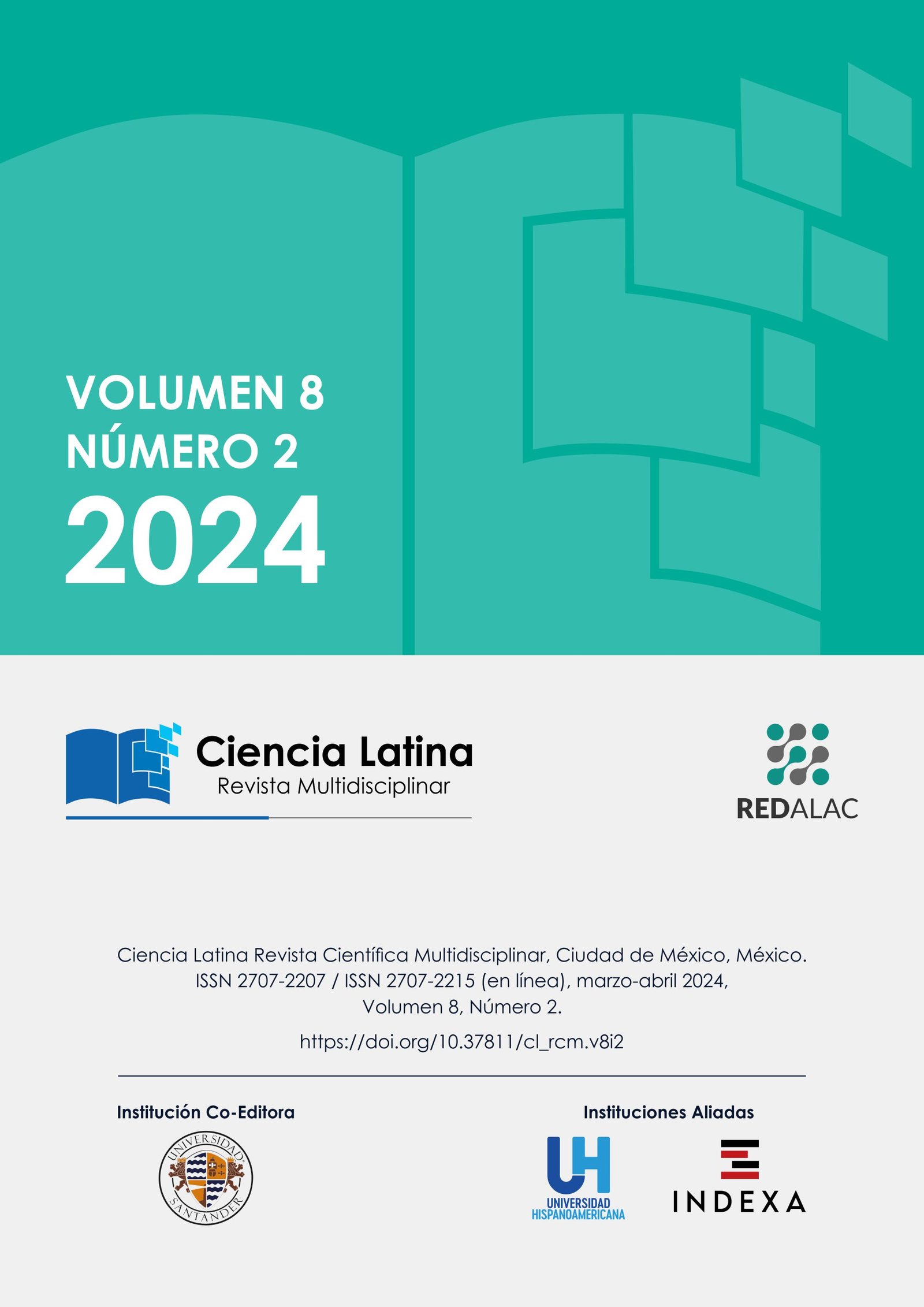Prevalencia de Intestino Irritable Post Covid-19 en Personal de Enfermería del Hospital Universitario de Puebla
Resumen
Objetivo: El presente estudio pretende conocer la prevalencia de intestino irritable posterior a un evento de COVID-19 en el personal de enfermería del Hospital Universitario de Puebla. Métodos: Se realizó un estudio descriptivo, prospectivo, transversal, homodemico. Resultados: el promedio de edad es de 35 años. Se obtuvo una muestra final de 28 pacientes. Del total de pacientes 26 (92.8%) son mujeres y 2 (7.14%) son hombres. Se encontró una prevalencia de 53.7% para el diagnóstico de síndrome de intestino irritable (IC 95% 35.1 -72.02%). Conclusión: Se encontró una prevalencia mayor de síndrome de intestino irritable en personal de enfermería posterior a haber presentado COVID-19.
Descargas
Citas
Domingo, S., & Juan, J. (2017). Los nuevos criterios de Roma (IV) de los trastornos funcionales digestivos en la práctica clínica. Medicina Clínica, 148(10), 464-468.
https://doi.org/10.1016/j.medcli.2016.12.020
Diagnóstico y Tratamiento del Intestino Irritable en el Adulto. México: Instituto Mexicano del Seguro social; 26 de marzo de 2015.
https://www.imss.gob.mx/sites/all/statics/guiasclinicas/042GER.pdf
Pontet, Y., & Olano, C. (2021). Prevalencia de síndrome de intestino irritable en América Latina. Revista de Gastroenterologia del Peru : Organo Oficial de la Sociedad de Gastroenterologia del Peru, 41(3), 144. https://doi.org/10.47892/rgp.2021.413.1154 http://www.scielo.org.pe/scielo.php?script=sci_arttext&pid=S1022-51292021000300144
Benda, A., Zerajic, L., Ankita, A., Cleary, E., Park, Y., & Pandey, S. (2021). COVID-19 Testing and Diagnostics: A Review of Commercialized Technologies for Cost, Convenience and Quality of Tests. Sensors, 21(19), 6581.
https://doi.org/10.3390/s21196581
https://www.mdpi.com/1424-8220/21/19/6581
Martínez-Anaya, C., Ramos-Cervantes, P. & Vidaltamayo, R. (2020). Coronavirus, diagnóstico y estrategias epidemiológicas contra COVID-19 en México. Educación Química. Vol 31 (2), 12-22. DOI: 10.22201/fq.18708404e.2020.2.75378.
https://www.scielo.org.mx/pdf/eq/v31n2/0187-893X-eq-31-02-12.pdf
Ochani, R., Asad, A., Yasmin, F., Shaikh, S., Khalid, H., Batra, S., Sohail, M. R., Mahmood, S. F., Ochani, R., Hussham Arshad, M., Kumar, A., & Surani, S. (2021). COVID-19 pandemic: from origins to outcomes. A comprehensive review of viral pathogenesis, clinical manifestations, diagnostic evaluation, and management. Le infezioni in medicina, 29(1), 20–36. https://pubmed.ncbi.nlm.nih.gov/33664170/
Gil, R., Bitar, P., Deza, C., Dreyse, J., Florenzano, M., Ibarra., Jorquera, J., Melo, J., Olivi, H., Parada, M., Rodríguez, J. C., & Undurraga, Á. (2021). CUADRO CLÍNICO DEL COVID-19. Revista Médica Clínica las Condes, 32 (1), 20-29. https://doi.org/10.1016/j.rmclc.2020.11.005
Pastrian-Soto, G. (2020). Bases genéticas y moleculares del COVID-19 (SARS-COV-2). mecanismos de patogénesis y de respuesta inmune. International Journal Of Odontostomatology, 14(3), 331-337.
https://doi.org/10.4067/s0718-381x2020000300331
https://www.scielo.cl/scielo.php?script=sci_arttext&pid=S0718-381X2020000300331
Grover, P., Kar, A. K., & Dwivedi, Y. K. (2020). Understanding artificial intelligence adoption in operations management: insights from the review of academic literature and social media discussions. Annals of Operations Research. https://doi.org/10.1007/s10479-020-03683-9 https://www.sciencedirect.com/science/article/pii/S092544392030226X#section-cited-by
Groves, H. T., Higham, S. L., Moffatt, M. F., Cox, M. J., & Tregoning, J. S. (2020). Respiratory Viral Infection Alters the Gut Microbiota by Inducing Inappetence. mBio, 11(1), e03236-19. https://doi.org/10.1128/mBio.03236-19 https://pubmed.ncbi.nlm.nih.gov/32071269/
Keely, S., Talley, N. J., & Hansbro, P. M. (2012). Pulmonary-intestinal cross-talk in mucosal inflammatory disease. Mucosal immunology, 5(1), 7–18. https://doi.org/10.1038/mi.2011.55 https://pubmed.ncbi.nlm.nih.gov/22089028/
Xiao, F., Sun, J., Xu, Y., Li, F., Huang, X., Li, H., Zhao, J., Huang, J., & Zhao, J. (2020). Infectious SARS-CoV-2 in Feces of Patient with Severe COVID-19. Emerging infectious diseases, 26(8), 1920–1922.
https://doi.org/10.3201/eid2608.200681
https://pubmed.ncbi.nlm.nih.gov/32421494/
Chen, Y., Chen, L., Deng, Q., Zhang, G., Wu, K., Ni, L., Yang, Y., Liu, B., Wang, W., Wei, C., Yang, J., Ye, G., & Cheng, Z. (2020). The presence of SARS-CoV-2 RNA in the feces of COVID-19 patients. Journal of medical virology, 92(7), 833–840. https://doi.org/10.1002/jmv.25825 https://pubmed.ncbi.nlm.nih.gov/32243607/
Wu, Y., Guo, C., Tang, L., Hong, Z., Zhou, J., Dong, X., Yin, H., Xiao, Q., Tang, Y., Qu, X., Kuang, L., Fang, X., Mishra, N., Lu, J., Shan, H., Jiang, G., & Huang, X. (2020). Prolonged presence of SARS-CoV-2 viral RNA in faecal samples. The lancet. Gastroenterology & hepatology, 5(5), 434–435. https://doi.org/10.1016/S2468-1253(20)30083-2
https://pubmed.ncbi.nlm.nih.gov/32199469/
Dhar, D., & Mohanty, A. (2020). Gut microbiota and Covid-19- possible link and implications. Virus research, 285, 198018. https://doi.org/10.1016/j.virusres.2020.198018
https://pubmed.ncbi.nlm.nih.gov/32430279/
de Oliveira, G. L. V., Oliveira, C. N. S., Pinzan, C. F., de Salis, L. V. V., & Cardoso, C. R. B. (2021). Microbiota Modulation of the Gut-Lung Axis in COVID-19. Frontiers in immunology, 12, 635471.https://doi.org/10.3389/fimmu.2021.635471
https://www.ncbi.nlm.nih.gov/pmc/articles/PMC7945592/
Callard, F., & Perego, E. (2021). How and why patients made Long Covid. Social science & medicine (1982), 268, 113426.
https://doi.org/10.1016/j.socscimed.2020.113426
https://www.ncbi.nlm.nih.gov/pmc/articles/PMC7539940/
Cares-Marambio, K., Montenegro-Jiménez, Y., Torres-Castro, R., Vera-Uribe, R., Torralba, Y., Alsina-Restoy, X., Vasconcello-Castillo, L., & Vilaró, J. (2021). Prevalence of potential respiratory symptoms in survivors of hospital admission after coronavirus disease 2019 (COVID-19): A systematic review and meta-analysis. Chronic respiratory disease, 18, 14799731211002240. https://doi.org/10.1177/14799731211002240 https://pubmed.ncbi.nlm.nih.gov/33729021/
Shah, W., Hillman, T., Playford, E. D., & Hishmeh, L. (2021). Managing the long term effects of covid-19: summary of NICE, SIGN, and RCGP rapid guideline. BMJ (Clinical research ed.), 372, n136. https://doi.org/10.1136/bmj.n136 https://pubmed.ncbi.nlm.nih.gov/33483331/
Murillo-Godínez, G.(2009). Las gotitas de Flügge. Revista Médica del Instituto Mexicano del Seguro Social, 47 (3), 290. https://www.redalyc.org/articulo.oa?id=457745514010
Yong S. J. (2021). Long COVID or post-COVID-19 syndrome: putative pathophysiology, risk factors, and treatments. Infectious diseases (London, England), 53(10), 737–754.
https://doi.org/10.1080/23744235.2021.1924397 https://pubmed.ncbi.nlm.nih.gov/34024217/
Karakan, T., Ozkul, C., Küpeli Akkol, E., Bilici, S., Sobarzo-Sánchez, E., & Capasso, R. (2021). Gut-Brain-Microbiota Axis: Antibiotics and Functional Gastrointestinal Disorders. Nutrients, 13(2), 389.https://doi.org/10.3390/nu13020389 https://www.ncbi.nlm.nih.gov/pmc/articles/PMC7910879/
Black, C. J., Drossman, D. A., Talley, N. J., Ruddy, J., & Ford, A. C. (2020). Functional gastrointestinal disorders: advances in understanding and management. The Lancet, 396(10263), 1664-1674. https://doi.org/10.1016/s0140-6736(20)32115-2 https://europepmc.org/article/med/33049221
Derechos de autor 2024 Cheryl Zilahy Diaz Barrientos, Dalyir Rodriguez Garibay, Frida Fernanda Cabrales Lamarque, Martin Uriel Vazquez Medina

Esta obra está bajo licencia internacional Creative Commons Reconocimiento 4.0.













.png)




















.png)
1.png)


